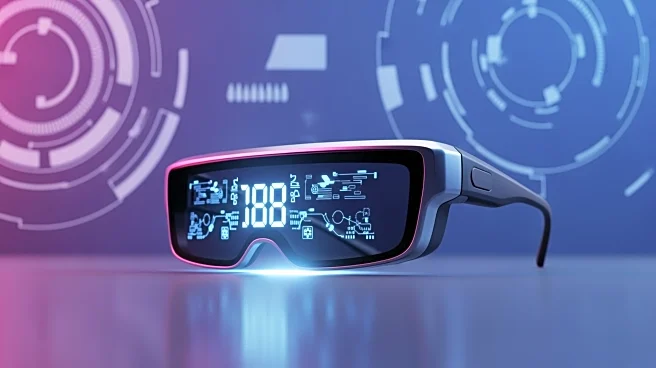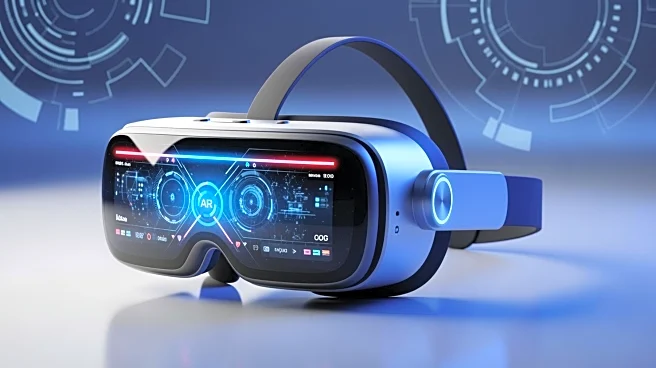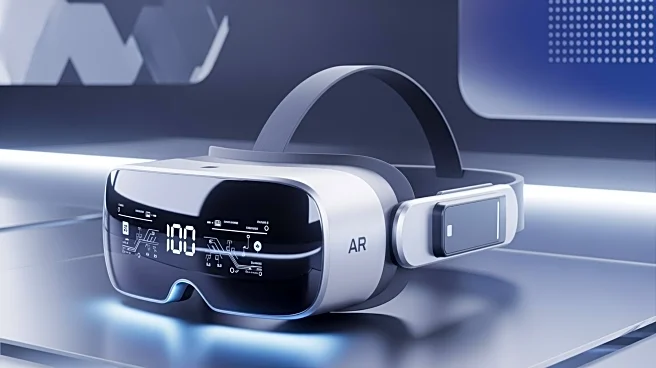What's Happening?
Meta has announced the release of its new Ray-Ban Display glasses, priced at $799, set to launch on September 30, 2025. These glasses are designed to integrate simple augmented reality features into everyday
eyewear, offering apps, directions, and live translations. The glasses come with a Meta Neural Band wristband, which uses EMG technology to interpret subtle hand gestures, boasting an 18-hour battery life per charge. Unlike full mixed-reality lenses, the Ray-Ban Display focuses on battery life and control simplicity over immersive experiences, positioning itself as a mainstream utility product. This launch marks Meta's first mass-market wearable that displays apps directly in the lens, a significant shift from previous VR and AR prototypes.
Why It's Important?
The introduction of Meta's Ray-Ban Display glasses is a pivotal moment in the augmented reality market, as it tests consumer acceptance of partial AR features before the arrival of more advanced passthrough optics. The $799 price point suggests a consumer-focused approach rather than targeting enterprise users, potentially accelerating the adoption of smart eyewear. As Apple and Google are expected to release competing products within the next 12-36 months, Meta's strategy could either compress competition or validate its approach of prioritizing availability over high-fidelity AR experiences. The success of these glasses will depend on real-world use, battery performance, and the integration of essential apps.
What's Next?
The launch of Meta's Ray-Ban Display glasses is likely to prompt reactions from major tech companies, particularly Apple and Google, who are anticipated to introduce their own AR products soon. The competition could lead to rapid advancements in AR technology and increased consumer interest in smart eyewear. Meta's focus on practical applications like navigation and messaging may drive initial curiosity, but sustained demand will hinge on the development of indispensable app integrations. As the market evolves, early adopters may face the decision of whether to embrace this first-generation product or wait for more advanced AR solutions.
Beyond the Headlines
Meta's decision to prioritize battery life and gesture controls over immersive AR experiences reflects a strategic choice to lower barriers for casual buyers. This approach may normalize smart eyewear as an adjunct to smartphones, rather than a standalone device. However, the limited AR capabilities could lead to consumer dissatisfaction if competitors deliver richer experiences in the coming years. The success of Meta's Ray-Ban Display glasses will likely influence the future direction of AR technology, shaping consumer expectations and industry standards.











